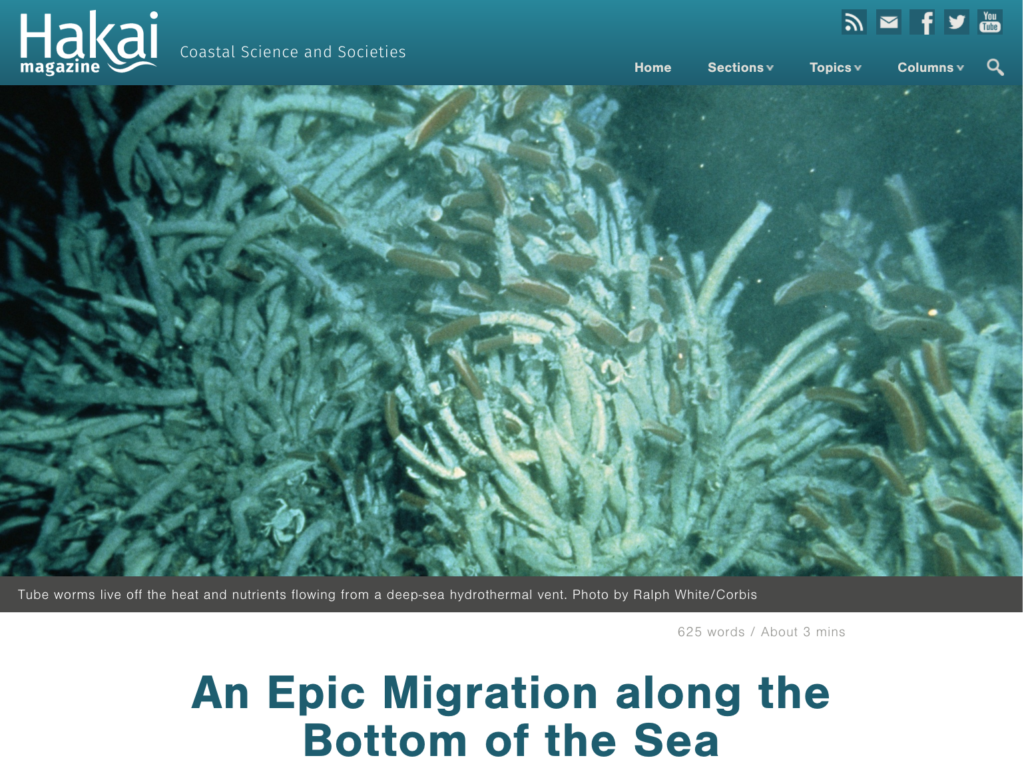On the bottom of the western Pacific Ocean, in Japan’s Okinawa Trough, the seafloor is a volcanic vision of wriggling tube worms, scurrying shrimp, and see-through specks of plankton flitting against a backdrop of stalagmite-like chimneys.
Deep-sea hydrothermal vents like this one were first discovered in the late 1970s, and ever since, scientists have been struggling to understand how such vibrant ecosystems can exist in these seemingly inhospitable places.
In a new study, scientists have demonstrated that by riding deep-sea currents, larvae should be able to travel between vent sites. The research is a theoretical assessment of how larvae would move throughout Japan’s Okinawa Trough and the broader western Pacific, relying on oceanographic modeling, larval simulations, and drifter experiments.
(Online-only story published in April 2016. Read the full article on the Hakai Magazine website)
